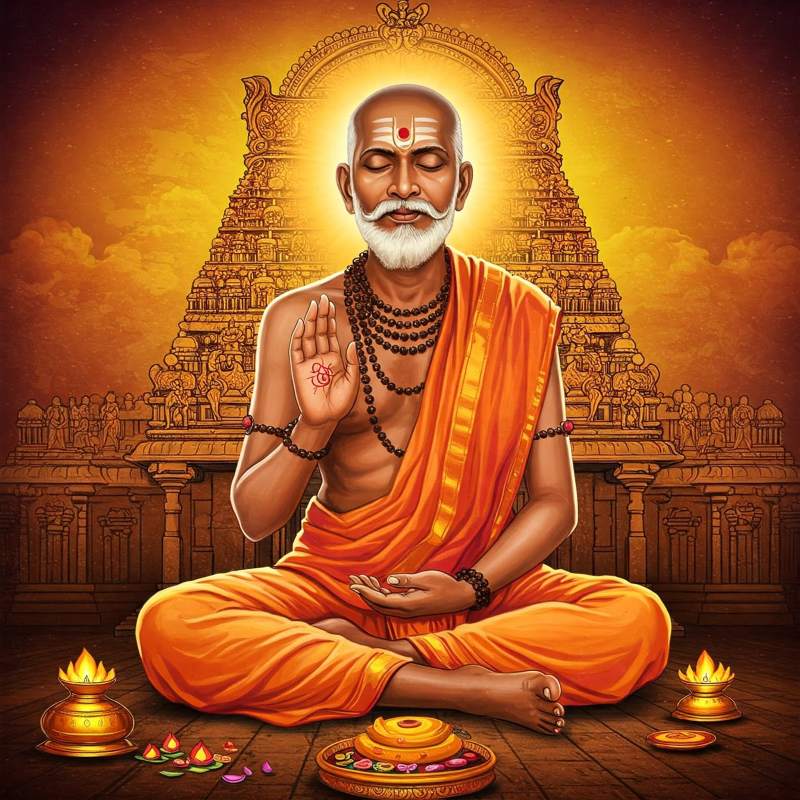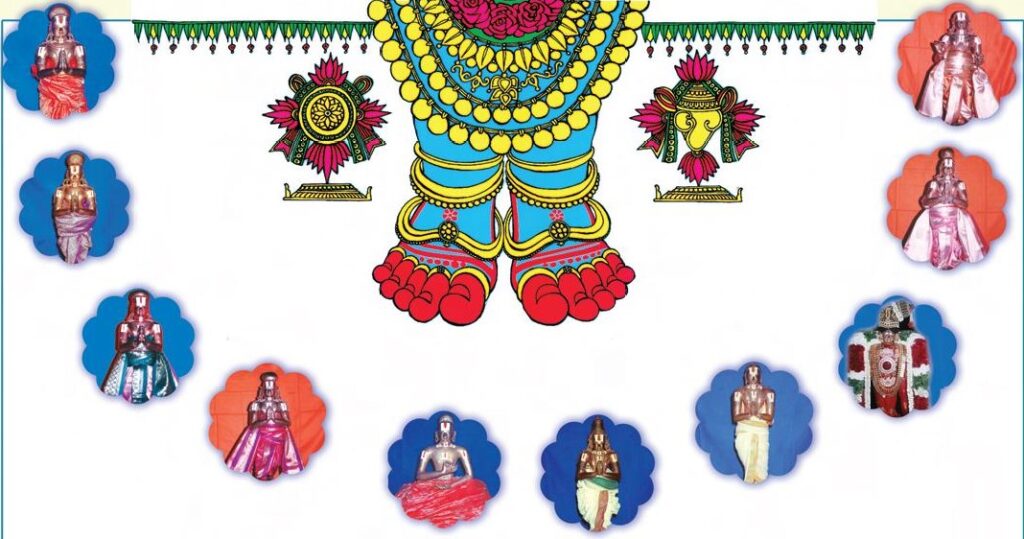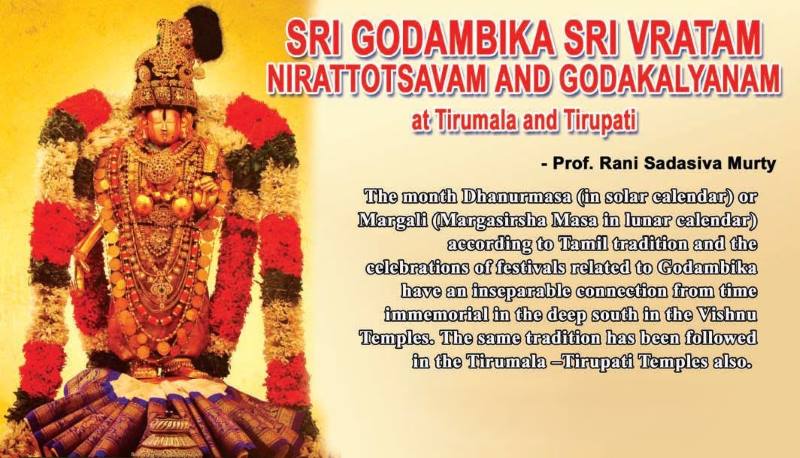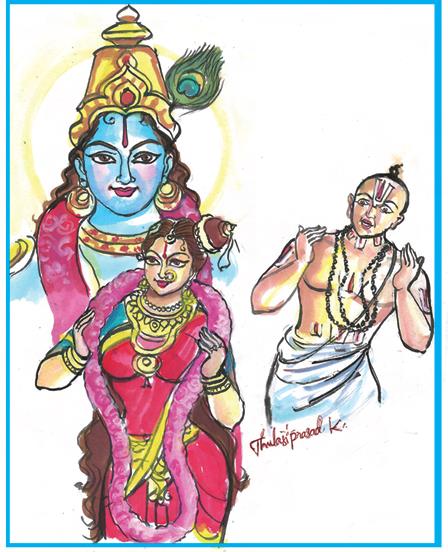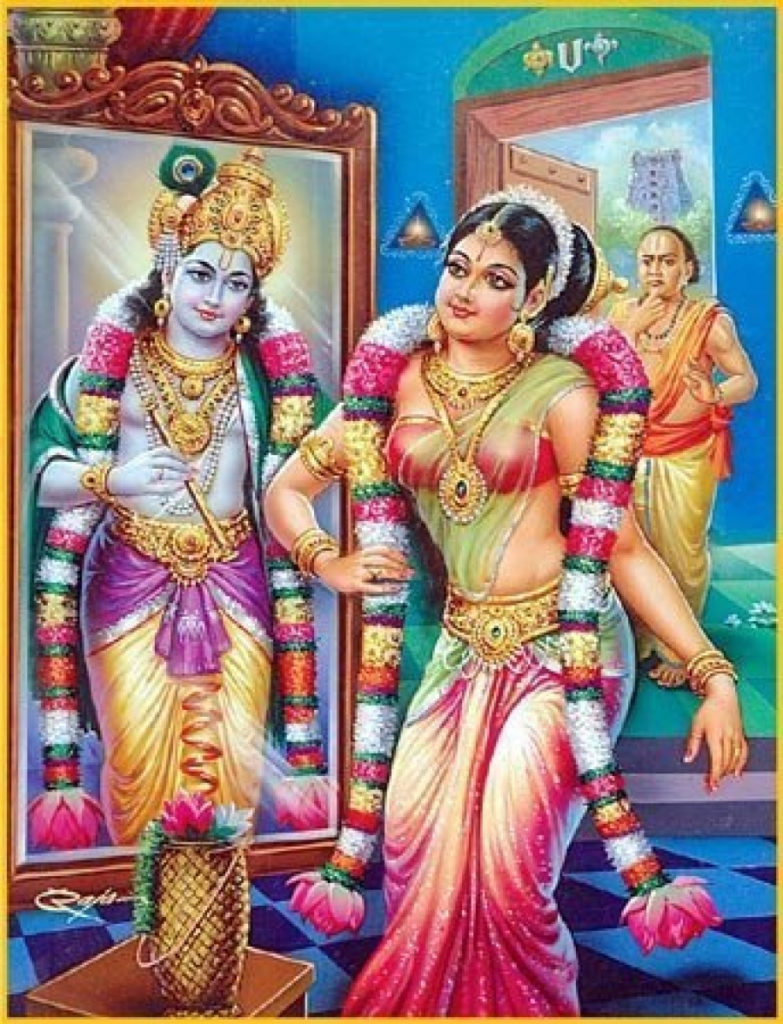Periya Alwar In all, we have 12 Alwars. Of them, two hail from Sri Villi Puttur. They are Vishnu Chitta and Andal, father and daughter. Vishnu Chitta is also called Periya Alwar. Among the Alwars, Vishnu Chitta has received high reverence. That is why he is also called as Periya Alwar. In Tamil, Periya means Read More
Category: Alvars
The Tamil word ‘Alvar’ means “one who remains immersed”. Alvars were devotees who were immersed in bhakti for the Supreme, Narayana. The Alvars who have contributed rightly to the Sri Vaishnava scripture, Nalayira Divya Prabhandham, are twelve in number.
Mudhal Alwars – First 3 Alwars
Mudhal Alwars Poigaialwar, Boodatalwar and Peyaiaalwar are collectively called as Mudhal Alwars or the first Alwars. They lived during the same period. Poigaialwar Tradition tells us that the first of them, Poigaialwar, was born at Kanchipuram, under the star Sravanam (thiruvonam) in October – November (Aippasi). The period is reported to be the 7th C Read More
The Privilege of Kulasekhara Alwar
Kulasekhara Alwar Kulasekhara Alwar wrote in Sanskrit called ‘Mukundamala’, a garland of poems in praise of Lord Krishna. He was also a staunch devotee of Lord Rama and his eleven Pasurams on the Lord of Seven Hills reflect his ‘Saranagati’ to Lord Venkateswara. His pasurams dedicated to Lord Venkateswara of Tirumala Hills are to be Read More
Sri Godambika Sri Vratam Nirattotsavam
Sri Godambika Godambika or Goda Devi or Andal as popular in Tamil Vaishnava Tradition are the names of the same great person. Godambika was the only female of Vaishnava Dharma among the 12 alwars or azhwars. She was praised as the human incarnation of Goddess Bhudevi as a baby found in the Tulasi Garden at Read More
Goda Parinayotsavam
Goda Parinayotsavam Sri Venkateswara Swamy, the presiding deity of Tirumala is adorned with the garlands brought from Sri Govindaraja swami temple in Tirupati on Kanuma day every year. These garlands are the presentations of Sri Godadevi (Andal) as part of a festival called ‘Sri Goda Parinayotsavam’. The holy garlands are first brought to Pedda Jeeyar Read More
Madhurakavi Alvar – the incarnation of Vainatheya
Madhurakavi Alvar Madhurakavi Alvar (Chitra – Chitrai) Madhurakavi (Sweet poetic), the incarnation of Vainatheya (the divine bird) was born in the year Easwara, Chitrai month, Sukla Paksha, Chaturdasi day (Friday) in the constellation of Chitrai at Tirukkolur in the Pandya Kingdom. He was well-versed in Tamil and Sanskrit, was of excellent conduct and devoted to Read More
Kulasekhara Alvar – An Avatar of Kousthubham
Kulasekhara Alvar Kulasekhara Alvar was born in ThiruvanjikulamChera Kingdom (Kerala). His father was renowned king Dhidaviradhan and Mother Nadhanayagi who was the daughter of Pandya King. He is the Avatar of Gem adorned by Lord Vishnu in his Chest named “Kousthubham”. He was born in Maasi (between mid-February and mid-March) on Punarvasu Star (Nakshatra). Kulasekhara Read More
Thiruvaadipooram of Sri GodaDevi
Thiruvaadipooram (Birthday of GodaDevi) Goda Devi – Incarnation of Bhumi Devi Goda Devi, hailed as Sri Andal is an incarnation of Bhumi Devi. She was bought up by Perialwar named Vishnuchittar in the temple town of Sri Villiputtur, Tamil Nadu. She is considered one of the 12 Vaishnava Saints known as Alwars who are devoted Read More
Goda Devi’s Marriage
On the day of Bhogi which is the last day of Dhanurmasa, the marriage of Goda Devi is celebrated. As soon as the Sun god enters Dhanushrasi, the month of Dhanurmasa commences. The Dhanurmasa remains up to Bhogi. In all temples of Vaishnavaites, the pasurams of the Divine known as TIRUPPAVAI are recited in the Read More
Story of Goda Devi (Andal)
Goda Devi – The Embodiment of Devotion Goda Devi (Andal), the Embodiment of love and devotion, prays to Lord Krishna: ‘O! Sri Krishna! You are my mother, father, friend, and relative. You are everything to me. All my bonds are only with you. Not just in this life, but in all lives, I wish to Read More
